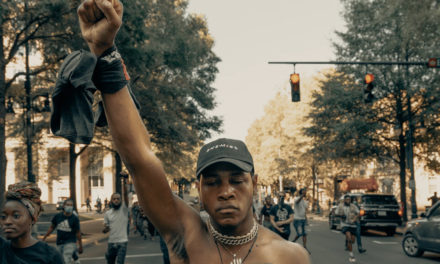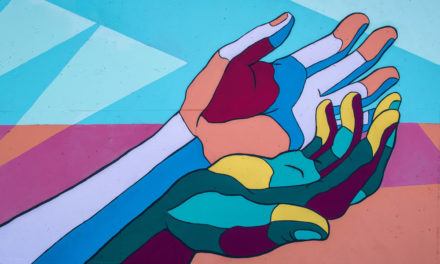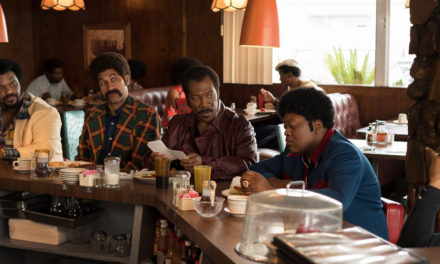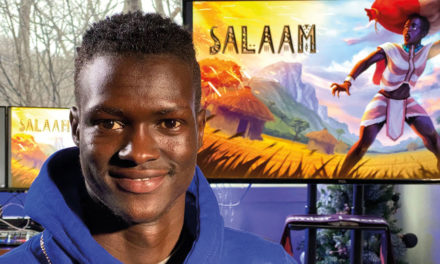As I logged on to Twitter on Tuesday, there was one story that dominated all others – the death of 46-year old African American man George Floyd at the hands of police officers. My heart immediately sank, I knew what was coming next.
George Floyd was arrested on Monday in Minnesota for alleged forgery. Videos have since gone viral showing George pinned to the ground by an officer’s knee as he begged to be released and protested about how he couldn’t breathe. George later died in a local hospital.
The four officers involved have been fired, but the family of George Floyd say that the officers involved should rightfully be charged with murder. The FBI is now investigating the case.
Twenty-four hours later, a community in pain took to the streets in protest, gathering at the intersection where George was killed. Police responded by spraying them with tear gas.
Videos of George’s violent death have been shared and circulated thousands of times on social media platforms and have also made it on to news sites like CNN and Sky News. As I try to process the information of yet another innocent Black man being killed by police, I have to contend with carefully manoeuvring through the internet in hopes that I don’t have to see the distressing and traumatic video myself.
This isn’t the first time something like this has happened. Harrowingly, it most likely won’t even be the last. But each time I’m affected by how even in death, Black people continue to be dehumanised. From the deaths at the hands of police from Alton Sterling to Philando Castile, when Black people die, it seems the only way the world can believe it is to watch it happen.
The damage that this can do to the psyche of the Black community has been likened to post-traumatic stress order. Monnica Williams, a clinical psychologist at the Centre of Mental Health Disparities in the University of Louisville, says, “There’s a heightened sense of fear and anxiety when you feel like you can’t trust the people who’ve been put in charge to keep you safe. Instead, you see them killing people who look like you”.
“Combined with the everyday instances of racism, like microaggressions and discrimination, that contributes to a sense of alienation and isolation. It’s race-based trauma.”
Similarly, April Reign, a journalist and former attorney in the US, said, “We’re witnessing mentally and emotionally traumatizing videos and pictures. It’s enough, it’s just enough. It’s just so overwhelming all the time,” she told The NewsHour. “There are people who are having trouble sleeping, who are having trouble eating. There are people who are having those symptoms of PTSD in the truest sense.”
I thought of George, and the countless others who have had their deaths displayed for the world as though it is an episode from a TV show, and what it must be like for the families to come across a video of their loved ones pleading for their life.
While video evidence has its own advantages, particularly in a courtroom, it serves no purpose to be recirculated on social media. Some may argue that without these videos going viral, attaining justice is impossible but one need only look at history to see that sometimes even evidence is not enough to acquit someone. For Tamir Rice, a 12-year old who was killed by an officer after he saw Rice carrying a toy gun, surveillance footage wasn’t even enough to charge the police officer. To this day, the officer remains free.
These senseless videos only contribute to the desensitisation of Black death, something that should never be normalised, but the only thing that continuously is because of these circulating videos. When a number of reporters were shot on live television by a former co-worker in 2015, many news outlets acknowledged that the footage was far too graphic to share. Black lives also need to be afforded that same humanity.
Black Lives Matter
In the last few years, the Black Lives Matter movement – an organisation that campaigns against the systematic violence of Black people, particularly by the hands of police – has been a defining force in raising awareness about the racist abuse faced by the Black community. The movement was born out of fighting for justice in the deaths of countless Black people, first of which was the 2014 murder of teenager Trayvon Martin by George Zimmerman. Another notable case was the death of Eric Garner, who died after being put in a chokehold by the New York police. Eric’s last words, “I can’t breathe”, have become a rallying cry for the BLM movement. Now that phrase weighs heavier as it echoes that of George.
I can only hope for a day when Black people do not have to prove their lives are worthy, a day in which our humanity is seen without us having to beg for it. As for now, all I ask is that you raise awareness of George’s murder without sharing the video.
- This Artist is Making the Underwater Arena His Canvas - 28th April 2021
- A Video Game that Promotes Peace and Conflict Resolution - 15th March 2021
- Netflix’s ‘Living Undocumented’ is a Difficult Series to Watch, and Exactly Why We Should - 9th March 2021






